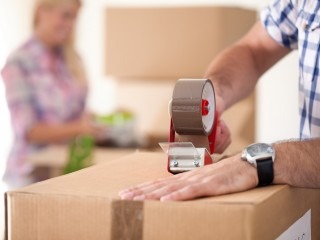
Staying healthy is a topic that is front and centre for all New Zealanders at this time. However, while we’re focused on preventing outbreaks of Covid-19, we shouldn’t forget other health concerns. There are many to consider when moving house, so this month we’re going to show you how to stay healthy and avoid injuries when you make your next move.
The risks
Injuries are very common for DIY movers who don’t prepare or take the proper precautions. Many people get bruises, bumps, strains and cuts, and often an injured back. As well as being painful, an injured back can take some time to heal. The money you saved doing your own move may well be spent on medical care. Some injuries sustained by DIY movers are permanent.
Finally, let’s not forget stress in this list. No matter how fit, strong and prepared, nobody escapes stress when moving. Stress has numerous physical and mental effects on the body and for that reason alone, you’ll want to minimise your stress levels while moving.
Step one: prepare
The first mistake people make is to try to rush through the job of moving house. When you cut corners, you put your safety at risk, not to mention potential damage to your furniture and belongings. Before you even start to pack a box, do a little planning, purchase some PPE (personal protective equipment) and use common sense.
Step two: dress for the job
Wear comfortable clothes that don’t restrict your movement in any way. Avoid anything loose or baggy that might catch on a door handle or other object. Choose clothes that breathe well to promote your overall comfort throughout the day.
Next, add your PPE. Steel-capped boots are ideal for toe protection. Many people get bruised toes if they drop an object. Wear good gloves to avoid cuts, scratches and to reduce the impact of a jammed finger or thumb. Avoid gloves that reduce finger articulation or grip. We’d recommend gloves like the good quality, close-fitting ones designed for builders and tradespeople.
Step three: remember to use good technique
Good moving technique starts with getting your body moving. As with any exercise, stretching, limbering up and getting your muscles warm reduces risk of injury. Remember to drink fluids, eat and take breaks throughout the day.
Good lifting technique is essential with heavy items. We have a guide to heavy lifting if you need more information. When you lift, bend your knees and keep your back upright and straight. Bending at the hips will result in back strain. If an item is too heavy, get another person to help. With large objects, get two friends, one to lift and one to direct you around obstacles.
Step four: don’t rely on muscle alone
There are many simple pieces of equipment that help you lift heavy items, reducing the risk of accidents and injuries. Moving straps help to distribute weight through your body. Rollers, sliders and trolleys are also useful and much less tiring if you’re not used to so much physical work. There’s no point in risking an injury if there’s an easier way to move an object.
Step five: how to guarantee your move is injury free
Call the professionals and get us to do the moving instead. What’s more, we’ll help you with the stress too, making your move much easier with additional services designed to get you settled into your new home as soon as possible. Get yourself a quote here. No physiotherapy included, as you won’t need it.








